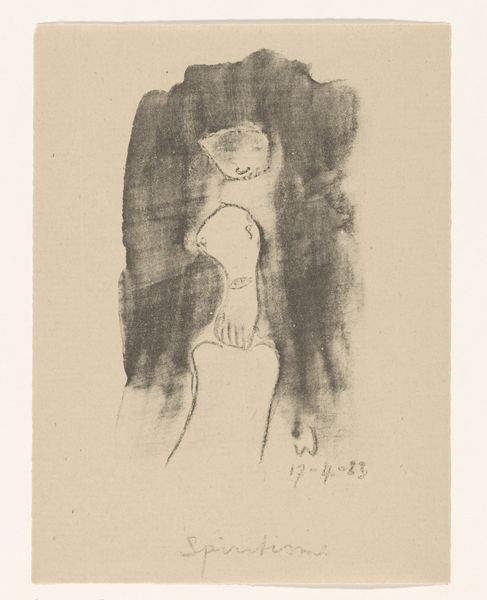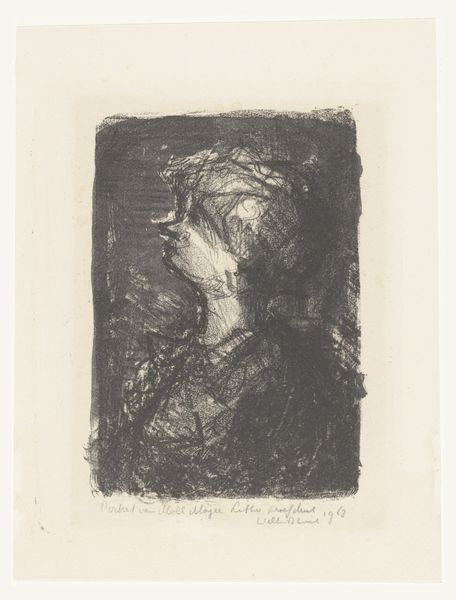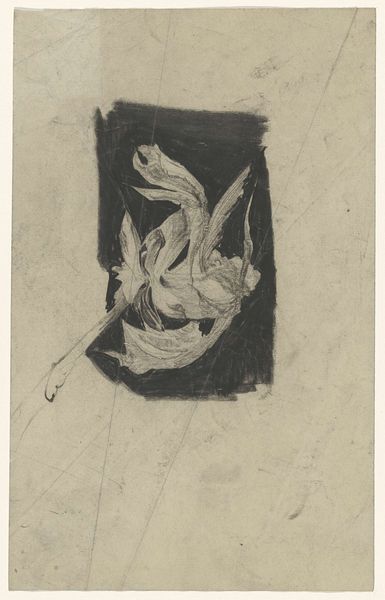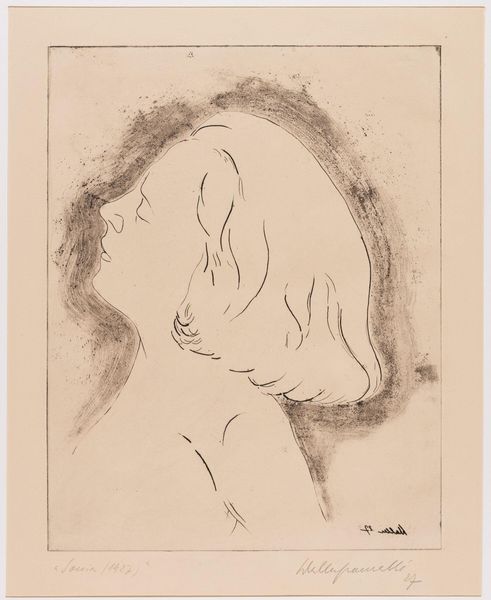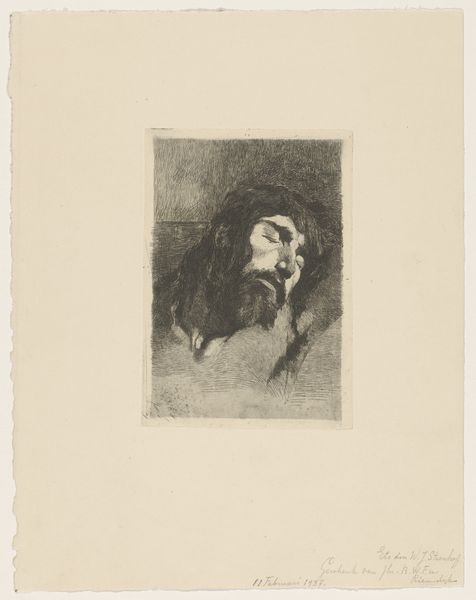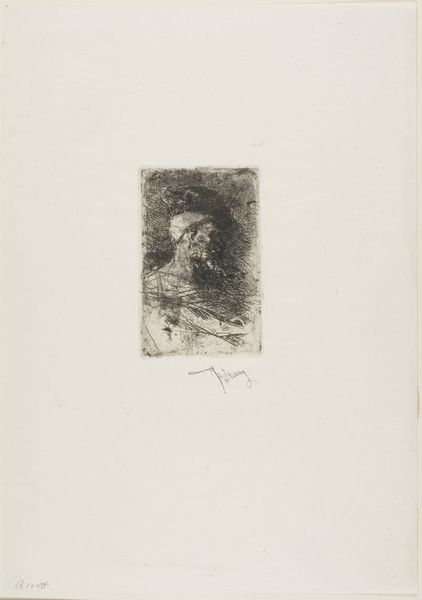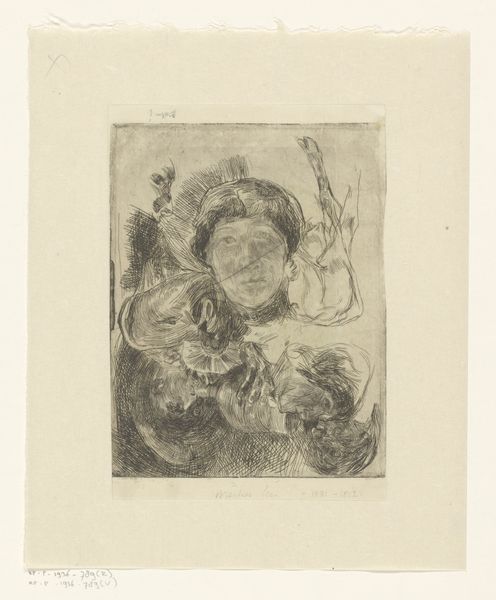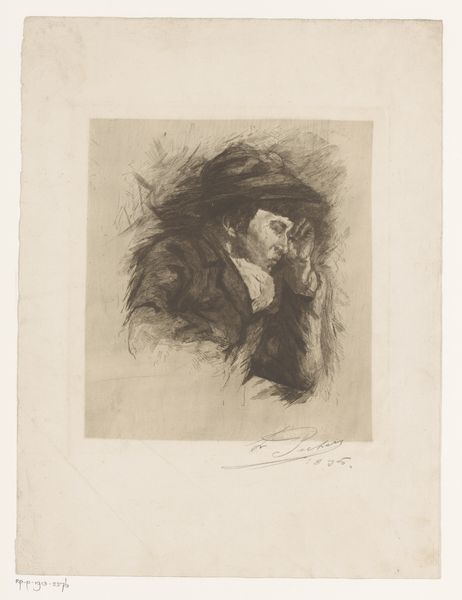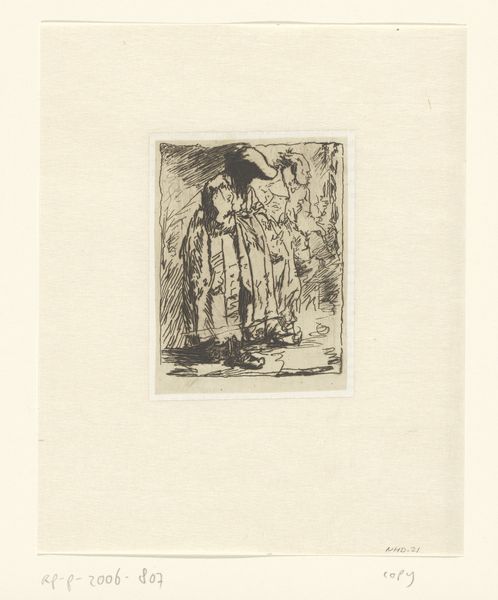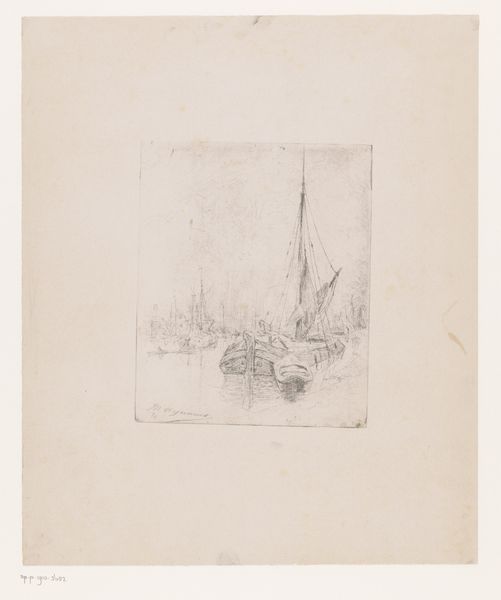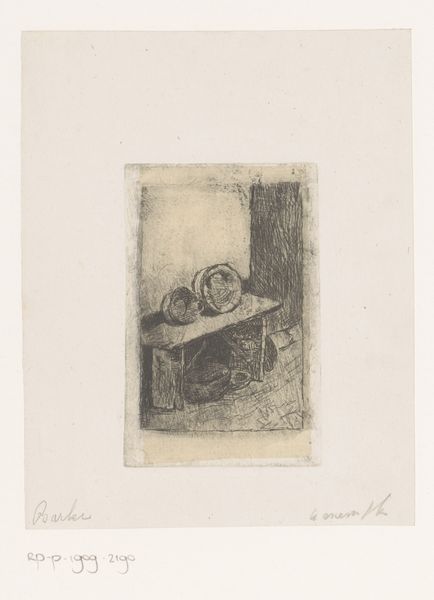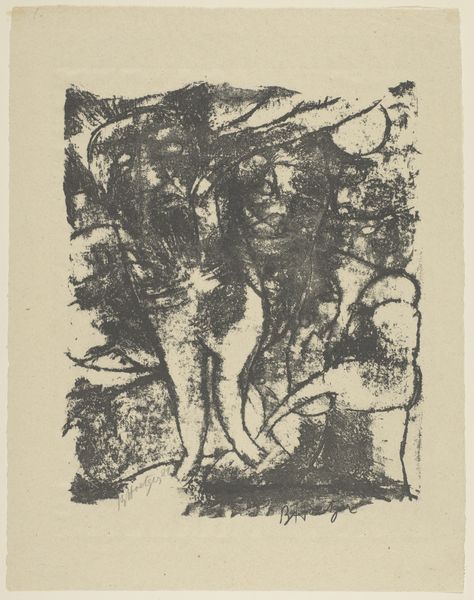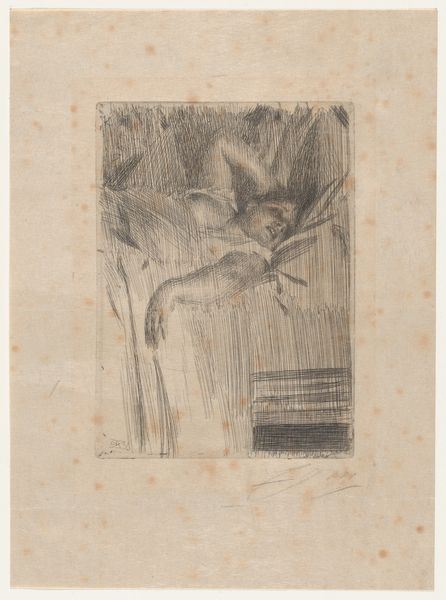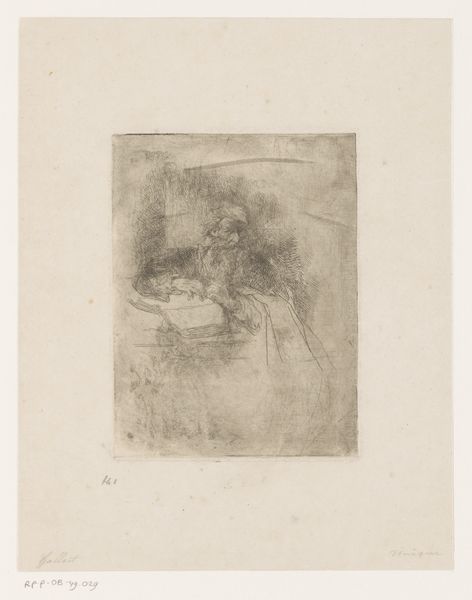
print, etching
#
portrait
#
pencil drawn
# print
#
impressionism
#
etching
#
figuration
Dimensions: height 218 mm, width 128 mm
Copyright: Rijks Museum: Open Domain
Editor: So here we have Mary Cassatt’s etching, “Kind,” created around 1883. It’s currently held at the Rijksmuseum. Looking at this print, I'm immediately drawn to the stark simplicity and the almost tentative quality of the lines. How would you approach interpreting this piece? Curator: From a materialist perspective, it’s intriguing to consider etching, particularly during Cassatt's time. It wasn’t just about aesthetic choice but access to production, requiring specific skills and workshops. Was she producing these herself, or commissioning them? Consider the cultural context. Was this a democratizing form of art production, making art more accessible? The “kind” in the title, the materials, and its production all come together. Editor: That's a really interesting point. So, rather than just thinking about the subject matter, the child, we need to also consider the physical and economic conditions that allowed this image to even exist. What was the availability of the materials Cassatt needed? How would that compare for someone else doing a similar image but, say, painting it in oil? Curator: Exactly. What kind of labor went into producing the paper and the ink? Understanding this unlocks a richer understanding of Cassatt's place in the art world, how gender, class, and artistic tradition intersect. Could it be argued the kind is not merely a reflection of motherly or childlike nature, but of Cassatt using etching? Editor: It makes you think about all the labor that goes into something seemingly so simple. Thanks, I had not thought to look at printmaking this way! Curator: It's been a pleasure! Considering the means of production can fundamentally alter our perspective on art.
Comments
No comments
Be the first to comment and join the conversation on the ultimate creative platform.
